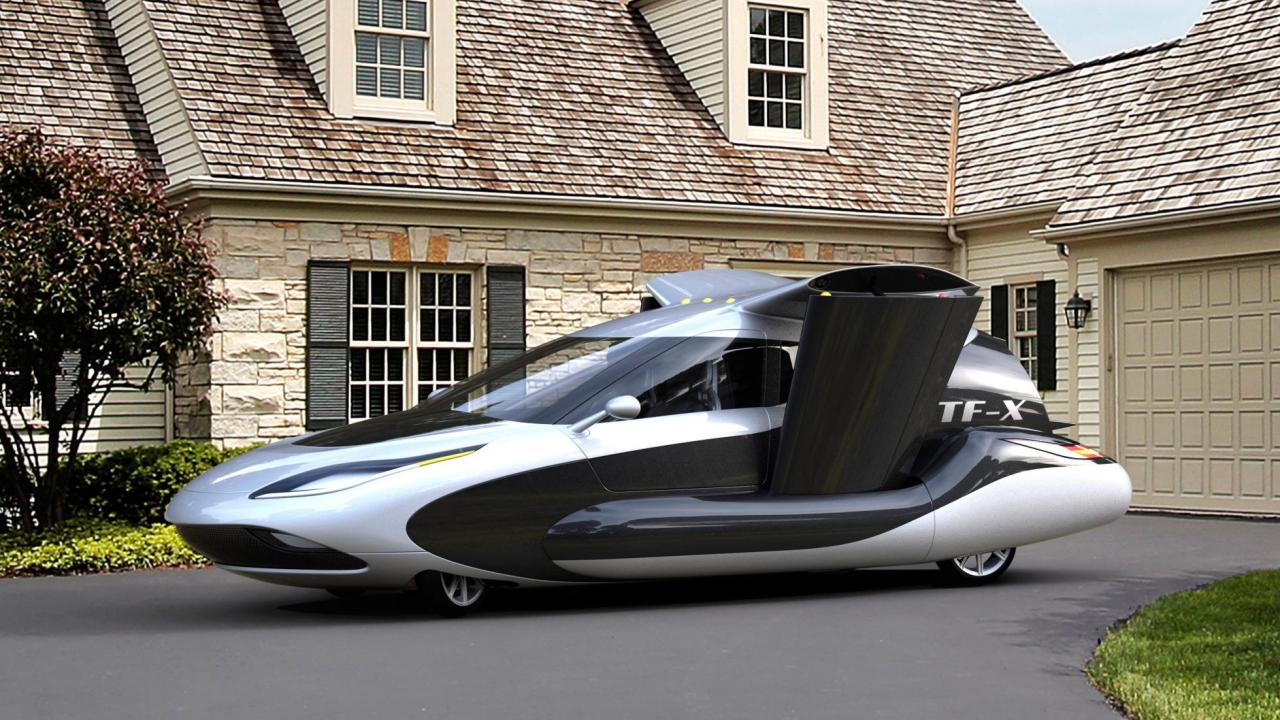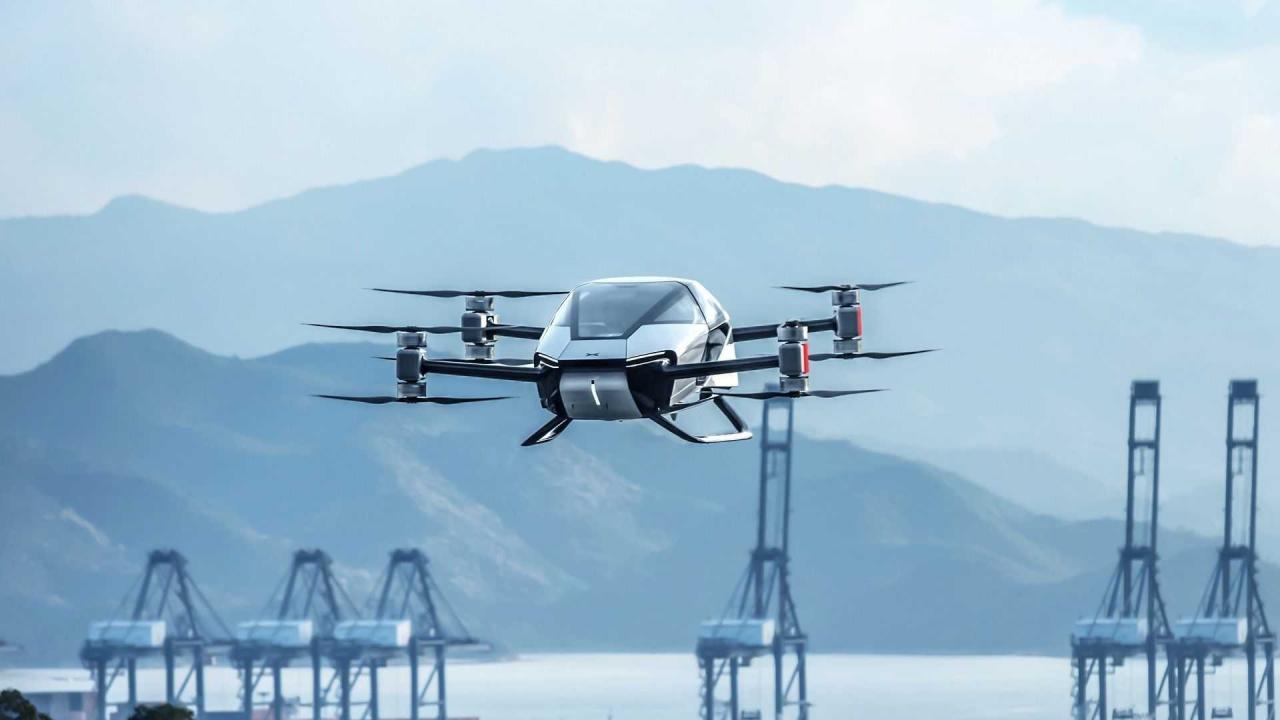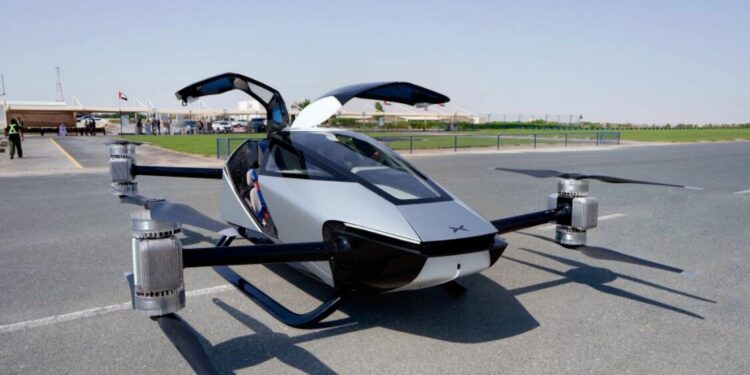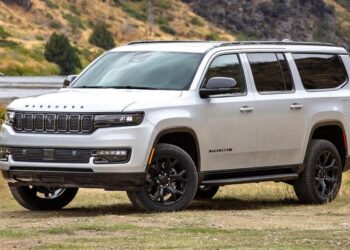For decades, the concept of flying cars has captivated the human imagination, a staple of science fiction promising a future free from traffic jams and ground-based constraints. What was once relegated to futuristic films like Blade Runner or The Jetsons is now rapidly transitioning from speculative fantasy to an engineering marvel on the cusp of reality. The question is no longer if flying cars will exist, but when they will truly take off and become an integral part of our urban landscapes. This isn’t just about a vehicle that can both drive and fly; it’s about an entirely new paradigm for urban mobility, emergency services, and even personal freedom, poised to revolutionize how we move through the world.
The Evolution of Flight and Ground Transportation

The history of mobility has been a relentless pursuit of speed, efficiency, and expanded reach. From the invention of the wheel to the combustion engine, and from the first successful airplane flight to commercial airliners, each innovation has reshaped our lives and economies. However, ground transportation, particularly in densely populated urban centers, has hit a ceiling. Traffic congestion, pollution, and the sheer time wasted in commutes have become pressing global issues. Meanwhile, aviation, while offering incredible speed for long distances, remains largely confined to dedicated airports and highly regulated air corridors.
The idea of combining these two realms – the flexibility of a car with the speed of an aircraft – has been a persistent dream. Early attempts at “autogyros” or roadable aircraft in the early 20th century were clunky, complex, and largely impractical. They highlighted the immense engineering challenges: how to create a vehicle that is both robust enough for road travel and light enough for efficient flight, while also being simple enough for widespread adoption.
The current wave of innovation, however, is different. Fueled by advancements in electric propulsion, battery technology, autonomous systems, advanced materials, and sophisticated air traffic management software, the Electric Vertical Take-Off and Landing (eVTOL) aircraft is emerging as the true heir to the “flying car” dream. These aren’t necessarily cars that drive on roads; they are primarily aerial vehicles designed for short-to-medium distance urban and suburban flights, offering a new dimension to personal and public transit.
Understanding the Aerial Vehicles
When we talk about “flying cars” today, the image should shift from a sedan with retractable wings to something more akin to a multi-rotor drone, scaled up for human transport. These are largely eVTOL (electric Vertical Take-Off and Landing) aircraft.
A. Electric Propulsion Systems:
- Zero Emissions: The primary characteristic is their electric power, making them far more environmentally friendly than traditional fossil fuel-powered vehicles. This is crucial for urban integration.
- Reduced Noise Footprint: Electric motors are significantly quieter than jet engines or even helicopter rotors. This is vital for public acceptance in residential areas.
- Distributed Propulsion: Many eVTOL designs use multiple small rotors or propellers, allowing for redundancy (safety), precise control, and quieter operation compared to a single large rotor.
B. Vertical Take-Off and Landing (VTOL) Capabilities:
- No Runways Needed: This is the game-changer. VTOL allows these vehicles to take off and land like helicopters, eliminating the need for long runways and enabling operation from compact “vertiports” or even rooftops in urban environments.
- Urban Integration: This capability is what makes them truly viable for city travel, enabling point-to-point air mobility within metropolitan areas.
C. Autonomous and Semi-Autonomous Systems:
- Enhanced Safety: Autonomy is key to minimizing human error, which is a major factor in traditional aviation accidents. Advanced sensors, AI, and precise navigation systems will govern flight.
- Optimized Flight Paths: AI will manage efficient air traffic, avoiding collisions, optimizing routes for speed and energy consumption, and dynamically responding to weather or unexpected events.
- Simplified Operation: While initial models might have pilots, the long-term vision is for fully autonomous operations, making air travel more accessible and reducing operational costs.
D. Advanced Materials and Lightweight Design:
- Carbon Fiber Composites: Extensive use of lightweight yet incredibly strong composite materials (like carbon fiber) is essential to maximize battery range and carrying capacity.
- Aerodynamic Efficiency: Designs are meticulously crafted to reduce drag and optimize lift, crucial for energy efficiency during flight.
E. Diverse Design Philosophies:
- Lift-and-Cruise: Some designs use separate sets of propellers for vertical lift and horizontal forward flight, transitioning between modes.
- Tilting Rotors/Wings: Others feature rotors or wings that tilt to provide both vertical lift and forward thrust.
- Ducted Fans: Some concepts utilize ducted fans for quieter operation and enhanced safety by enclosing the rotating blades.
The Promise of Urban Air Mobility (UAM)
The potential impact of these aerial vehicles, often referred to under the umbrella of Urban Air Mobility (UAM), is transformative.
A. Alleviating Urban Congestion:
- Bypassing Ground Traffic: The most obvious benefit is the ability to bypass congested roads, drastically cutting down commute times. What might take two hours by car could take 15-20 minutes by air.
- New Commuting Options: Opens up new commuting patterns, potentially allowing people to live further from city centers without sacrificing commute time.
B. Enhanced Emergency Services:
- Faster Response Times: eVTOLs could rapidly transport medical personnel, equipment, or even patients to emergencies in dense urban areas, where ground ambulances are often stuck in traffic.
- Disaster Relief: Provide swift access to disaster zones where ground infrastructure is damaged or impassable.
C. Goods Delivery and Logistics:
- Rapid Delivery: High-value or time-sensitive goods could be delivered quickly across urban areas.
- Medical Supplies: Drones (and eventually larger eVTOLs) could deliver critical medical supplies, organs for transplant, or urgent medications.
D. Tourism and Experiential Travel:
- Scenic Flights: Offer unique aerial tours of cities and landmarks, providing unparalleled views.
- Rapid Sightseeing: Enable tourists to visit multiple attractions in a fraction of the time.
E. Increased Accessibility:
- Remote Area Access: Potentially provide faster access to remote or difficult-to-reach locations.
- Mobility for All: As the technology matures and costs decrease, UAM could offer new mobility solutions for individuals with disabilities or those in areas with limited ground transport options.
The Hurdles on the Runway: Challenges to Widespread Adoption
Despite the rapid technological progress, several significant challenges must be addressed before flying cars become a common sight in our skies.
A. Regulatory Framework and Airspace Management:
- Complex Air Traffic Control: Integrating thousands of new aerial vehicles into existing controlled airspace, especially at lower altitudes, requires entirely new and robust air traffic management systems (ATM).
- Certificating New Aircraft: Aviation authorities (like the FAA in the US and EASA in Europe) have rigorous certification processes for new aircraft, which are designed for traditional planes and helicopters. Adapting these for novel eVTOL designs is a lengthy and complex undertaking.
- Noise Regulations: Despite being quieter than helicopters, the cumulative noise of many eVTOLs could still be an issue for urban residents, necessitating strict noise regulations.
B. Safety and Public Perception:
- Accident Aversion: Even one major accident involving an early eVTOL could severely damage public trust and set back adoption significantly.
- Security Concerns: Preventing unauthorized access or malicious use of these vehicles requires robust security protocols.
- Public Acceptance: Convincing urban populations that flying vehicles are safe, quiet, and beneficial, rather than intrusive, will require extensive public engagement and proven safety records.
C. Infrastructure Development (“Vertiports”):
- Landing and Take-off Sites: eVTOLs need dedicated “vertiports” – small, strategically located facilities for take-off, landing, charging, and passenger boarding.
- Real Estate and Zoning: Securing prime urban real estate for vertiports, especially rooftops, and obtaining necessary zoning approvals will be a major challenge.
- Intermodal Connectivity: Vertiports need to be seamlessly integrated with existing ground transportation networks (subways, buses, taxis) to provide true door-to-door mobility.
D. Battery Technology and Range Limitations:
- Energy Density: Current battery technology, while rapidly improving, still limits the range and payload of electric aircraft compared to fossil fuels. This impacts viability for longer flights or heavier loads.
- Charging Infrastructure: Building out a widespread, rapid charging infrastructure for vertiports will be a massive undertaking.
- Battery Degradation: The lifespan and degradation of batteries under demanding flight cycles is an ongoing area of research.
E. Cost and Affordability:
- High Initial Costs: Early eVTOLs will be expensive to manufacture and operate, making them initially a premium service, likely akin to a private jet or helicopter charter.
- Path to Mass Market: The true impact on urban mobility requires prices to come down significantly, making them accessible to a wider demographic. This will depend on economies of scale and technological advancements.
- Insurance and Liability: New insurance models and liability frameworks will be needed for this novel mode of transport.
Progress of Aerial Vehicles

The race to bring flying cars to market is highly competitive, with a mix of aerospace giants, automotive manufacturers, and innovative startups leading the charge.
A. Aerospace & Defense Companies:
- Boeing: Through its Wisk Aero subsidiary, Boeing is developing autonomous eVTOLs for passenger transport.
- Airbus: Actively involved in UAM concepts and technologies, including Project Vahana and CityAirbus.
- Bell Textron: Developing its Nexus air taxi concept.
B. Automotive Giants:
- Hyundai: Has a dedicated Urban Air Mobility division, partnering with companies like Supernal.
- Toyota: Investing heavily in Joby Aviation, a leading eVTOL developer.
- Stellantis: Partnered with Archer Aviation.
C. Innovative Startups (The Front-Runners):
- Joby Aviation: A leading player with a mature prototype and significant investment, aiming for commercial operations by mid-decade.
- Archer Aviation: Developing eVTOLs for urban air taxi services, partnered with United Airlines.
- Lilium: German company focusing on regional air mobility with jet-powered eVTOLs.
- Volocopter: Developing electric air taxis and drone services, with extensive flight testing in various cities.
- EHang: Chinese company focused on autonomous aerial vehicles for passenger transport and logistics.
D. Infrastructure Developers:
- Blade Urban Air Mobility: Already operating helicopter and seaplane services, positioned to transition to eVTOLs and develop vertiport infrastructure.
- Skyports: Specializing in designing, building, and operating vertiports and drone delivery networks.
These companies are not just designing aircraft; they are working on the entire ecosystem: flight control software, ground infrastructure, charging solutions, and even potential business models like ride-sharing for the skies.
When Will We See Them Soaring?
The question “Flying Cars Takeoff Soon?” has a nuanced answer. While prototypes are flying and demonstrations are happening, widespread commercial operations are still a few years away.
A. Early Commercial Operations (2025-2028):
- Limited Rollout: Expect initial services in a few select, forward-thinking cities, likely targeting specific corridors (e.g., airport to city center) or high-demand routes.
- Pilot-Operated: Most early services will likely involve a human pilot onboard, even if the aircraft has autonomous capabilities, due to regulatory and public trust considerations.
- Premium Service: Prices will be high, making it a luxury offering rather than a mass transit solution.
B. Expansion and Increased Affordability (2028-2035):
- More Cities and Routes: As regulations mature and production scales, services will expand to more metropolitan areas.
- Automated Elements: Increased levels of autonomy will be introduced, potentially leading to lower operational costs.
- Price Reduction: Economies of scale and technological advancements will gradually bring down prices, making air taxi services more competitive with premium ground transport (e.g., luxury taxis, ride-shares during peak hours).
C. Mass Adoption and Fully Autonomous Fleets (Beyond 2035):
- Ubiquitous UAM: Flying cars could become a common mode of intra-city transport, accessible to a broad segment of the population.
- Fully Autonomous Operations: Extensive testing, robust regulatory frameworks, and widespread public acceptance will enable truly pilotless operations.
- Integrated Mobility Networks: Seamless integration with ground transport, smart city infrastructure, and even potentially personal ownership for some.
This ambitious timeline relies on continued technological breakthroughs, significant investment, and, most crucially, the establishment of comprehensive and globally harmonized regulatory frameworks. The collaboration between governments, industry, and urban planners will be paramount.
Conclusion
The dream of the flying car is no longer confined to the pages of science fiction. Thanks to relentless innovation in electric propulsion, autonomous systems, and advanced materials, eVTOL aircraft are poised to redefine urban mobility. While significant hurdles remain – particularly in regulation, infrastructure, and public acceptance – the dedicated efforts of aerospace giants, automotive leaders, and visionary startups are rapidly pushing the boundaries of what’s possible.
The true “takeoff” won’t be a single event but a gradual, phased rollout, beginning with premium services in select cities and eventually expanding to a broader, more affordable urban air mobility network. This isn’t merely about convenience; it’s about unlocking new dimensions of efficiency, accessibility, and emergency response, fundamentally reshaping our relationship with urban spaces. The future of transportation is vertical, electric, and increasingly autonomous, promising a world where the sky truly becomes the next frontier for seamless travel.















